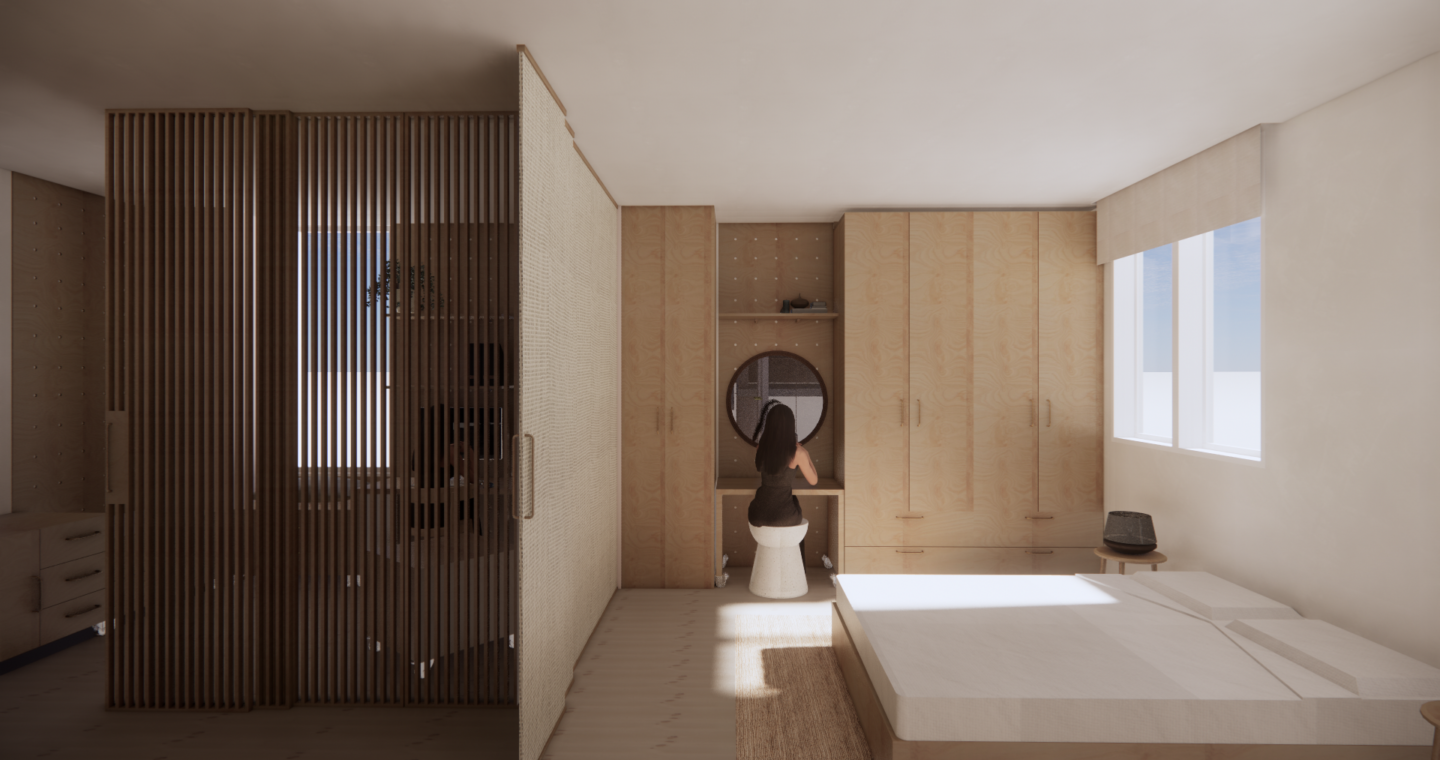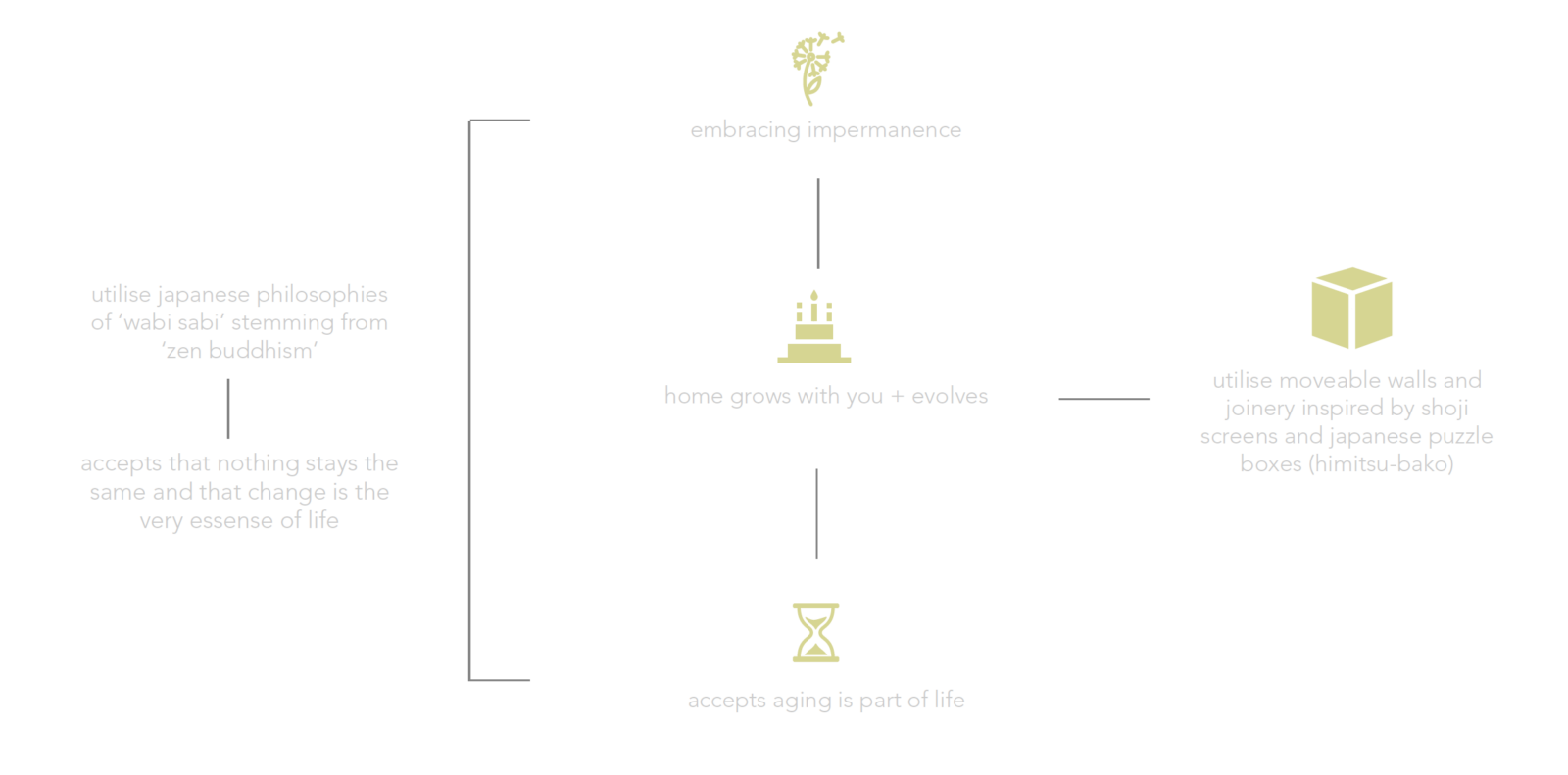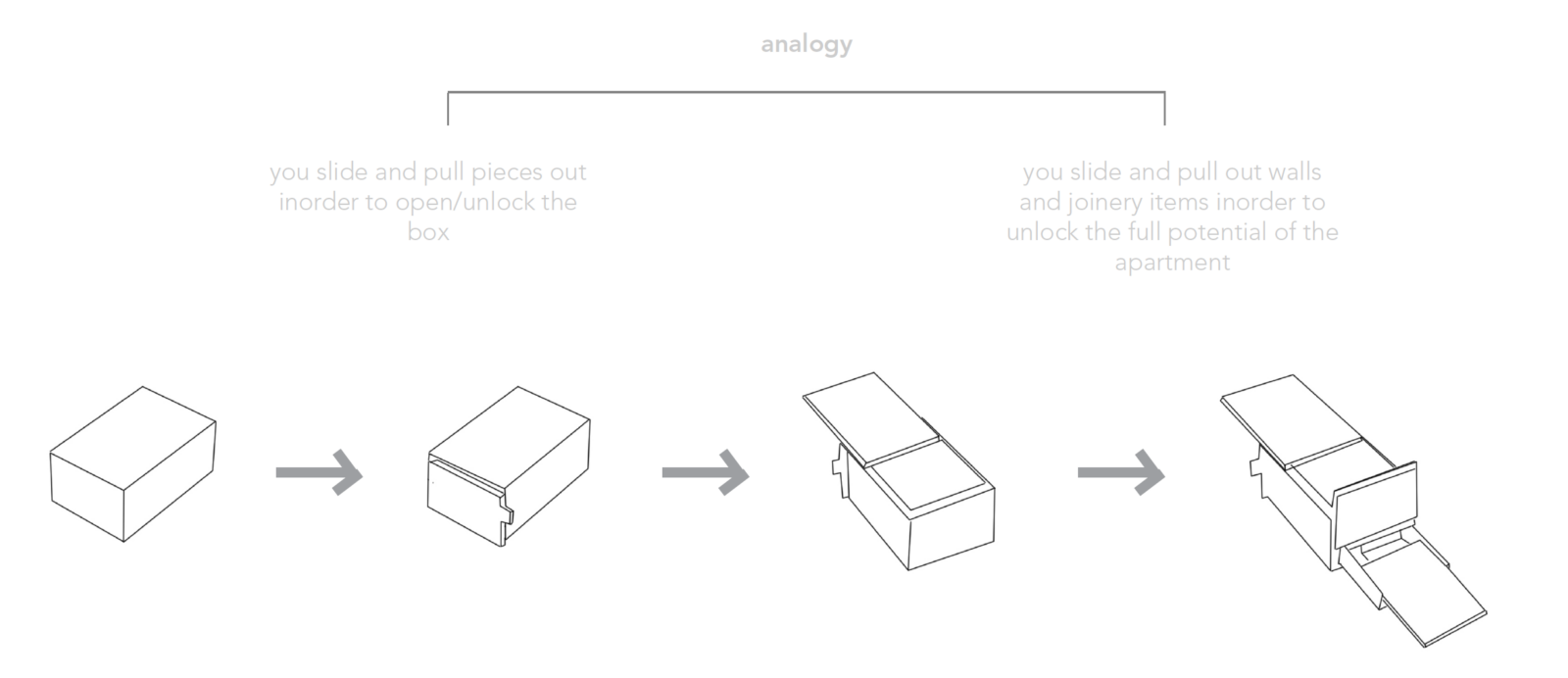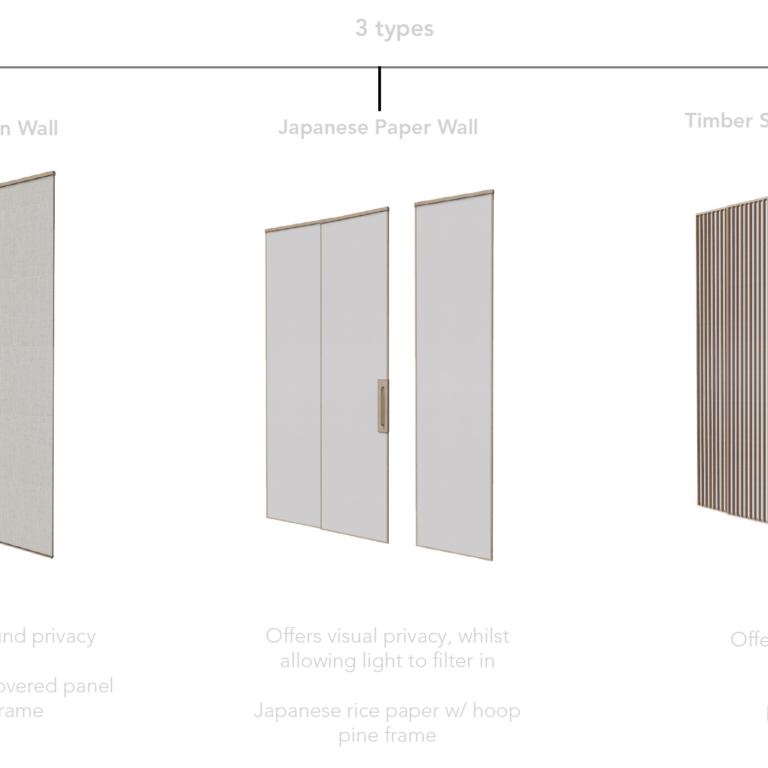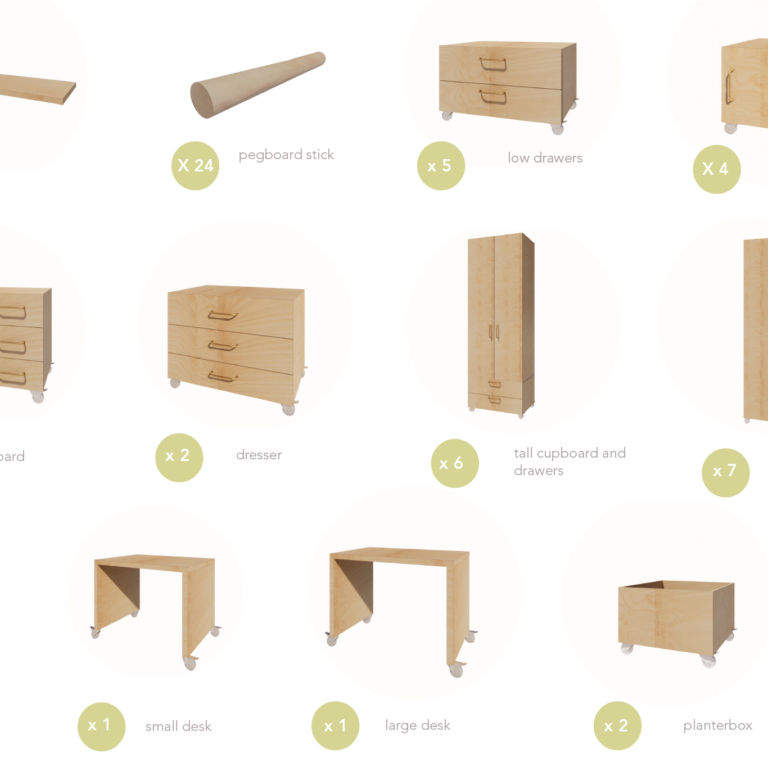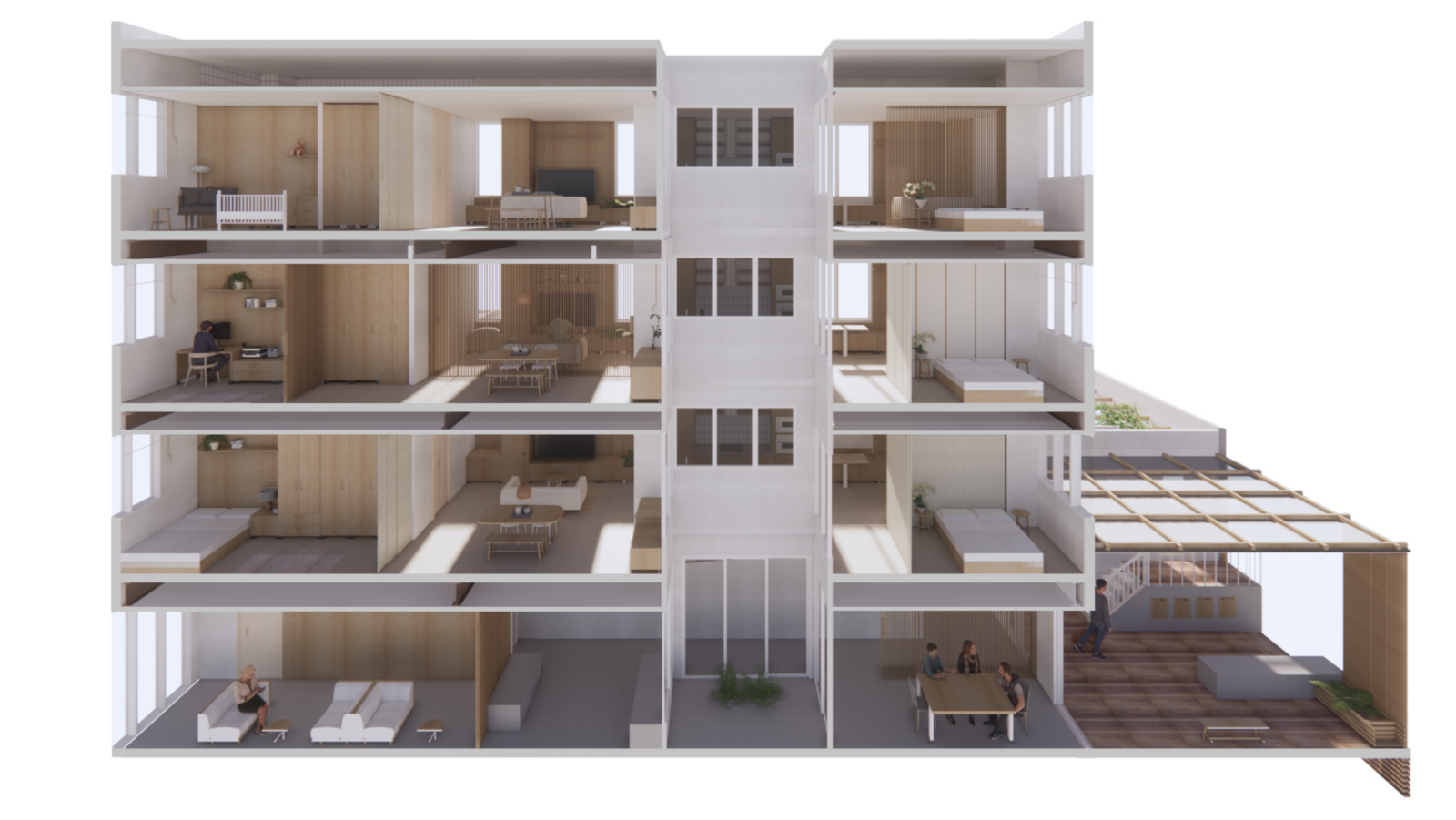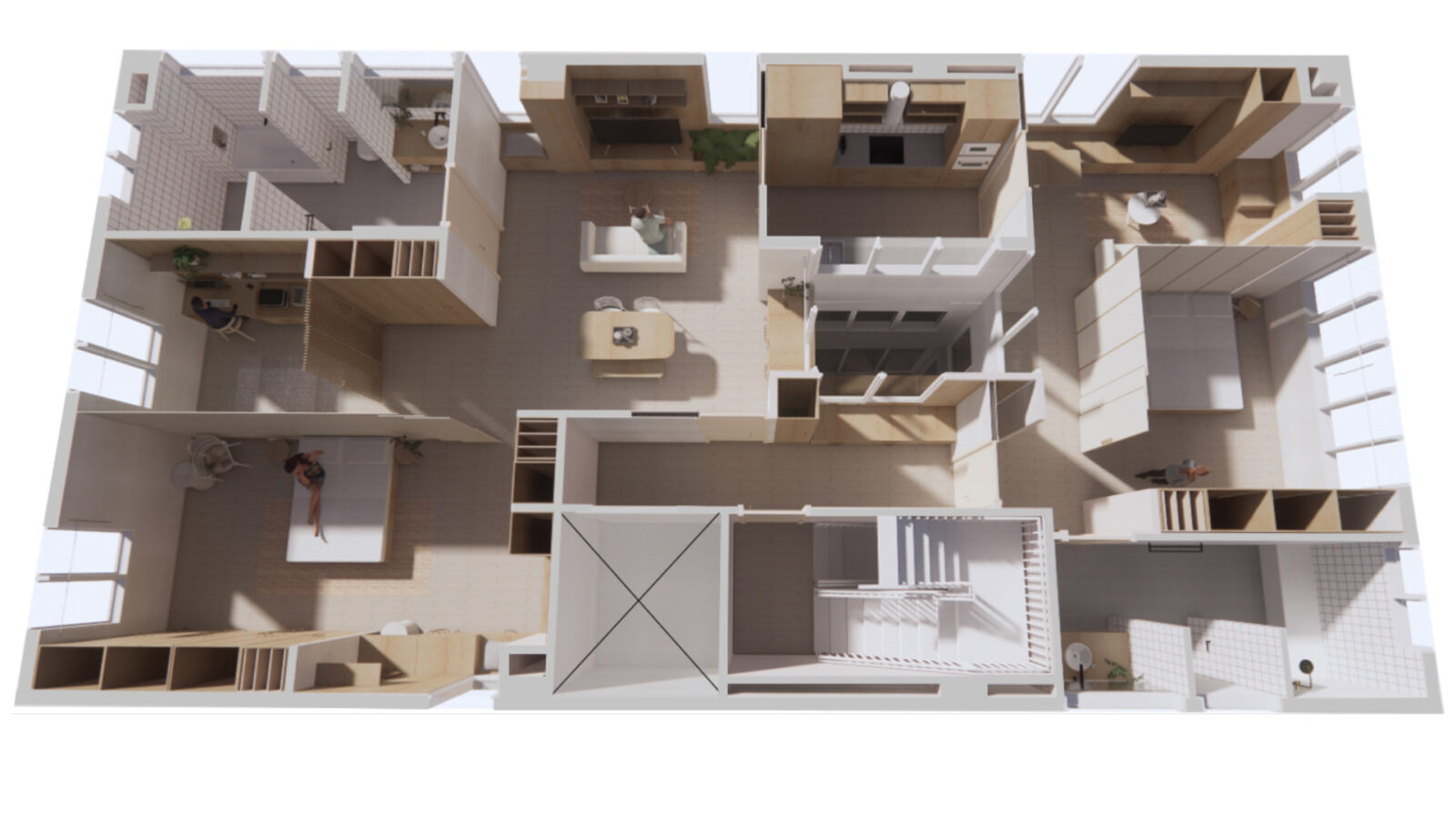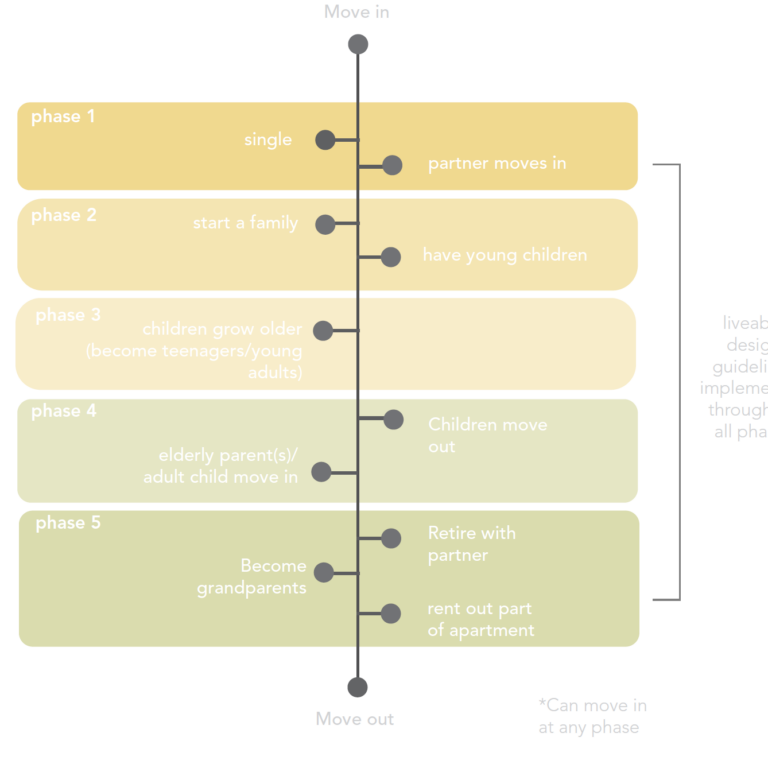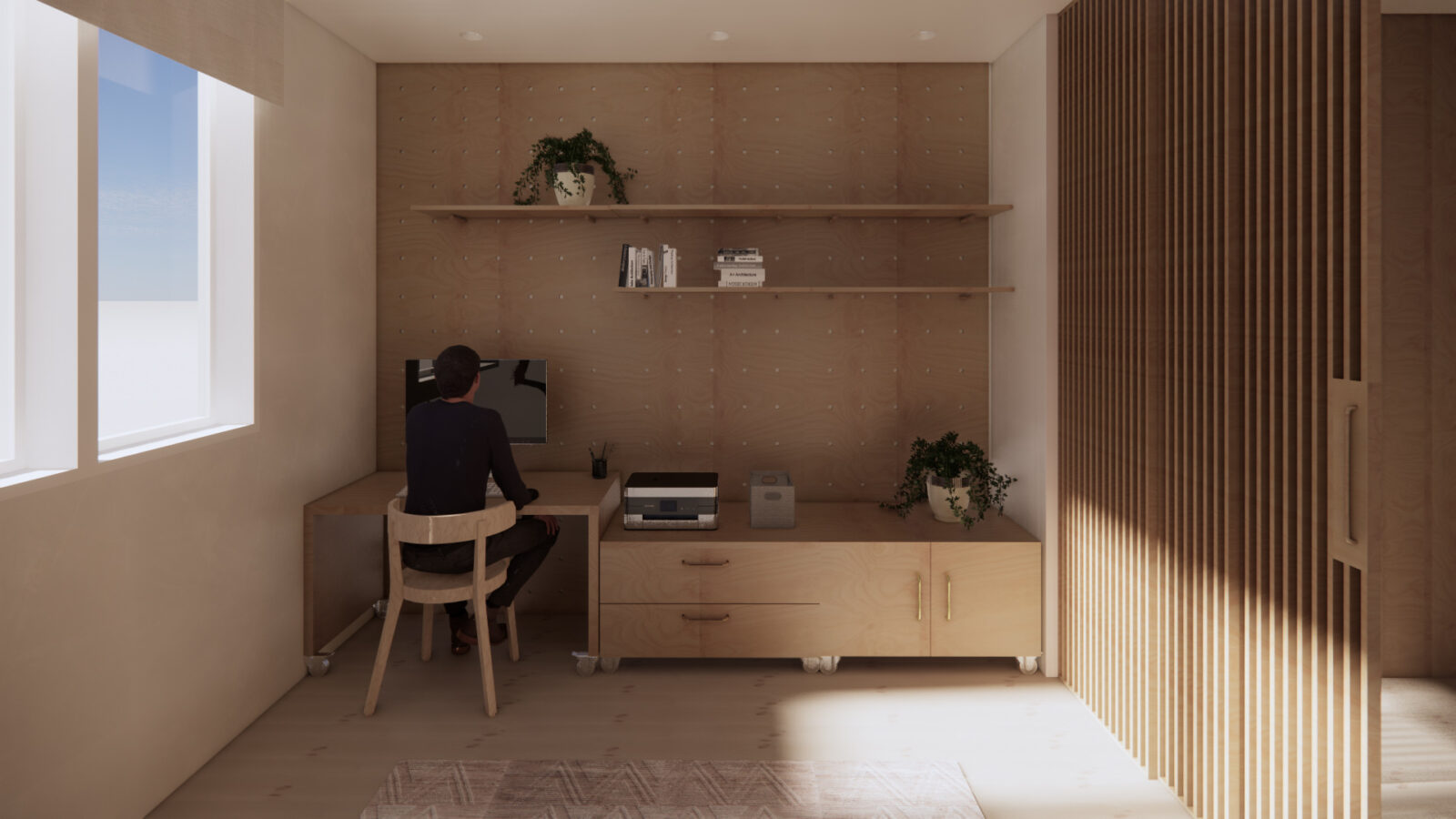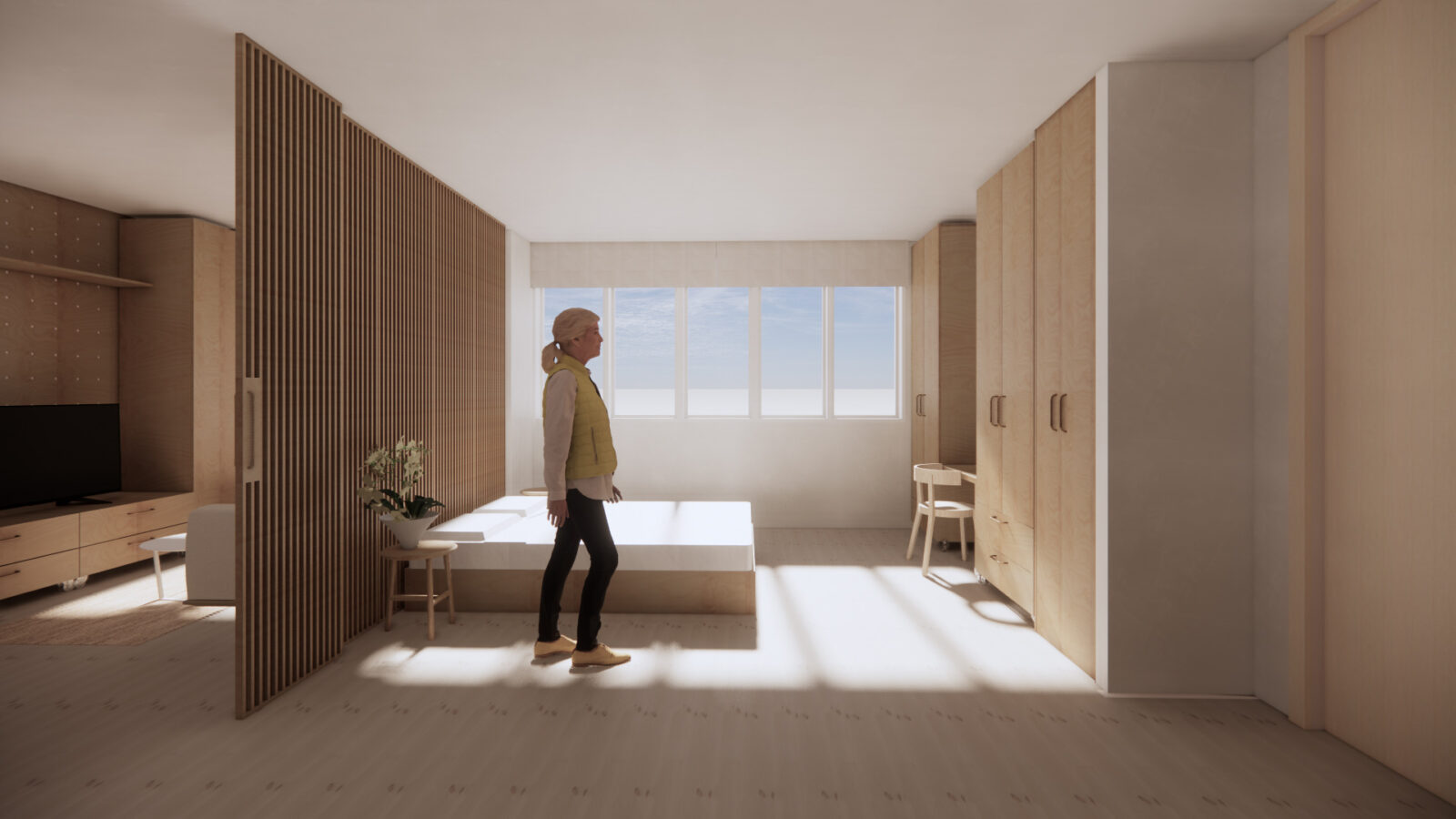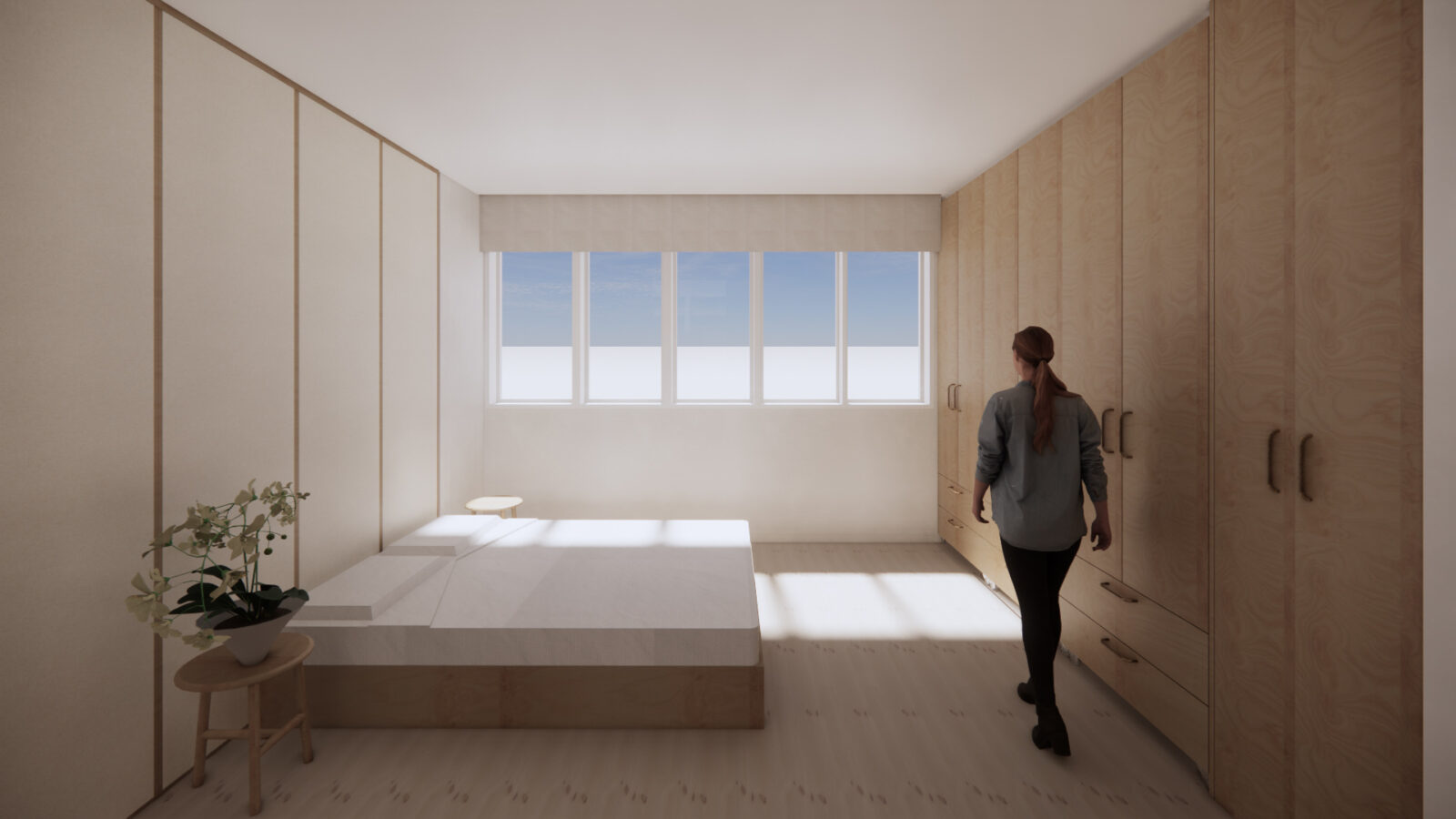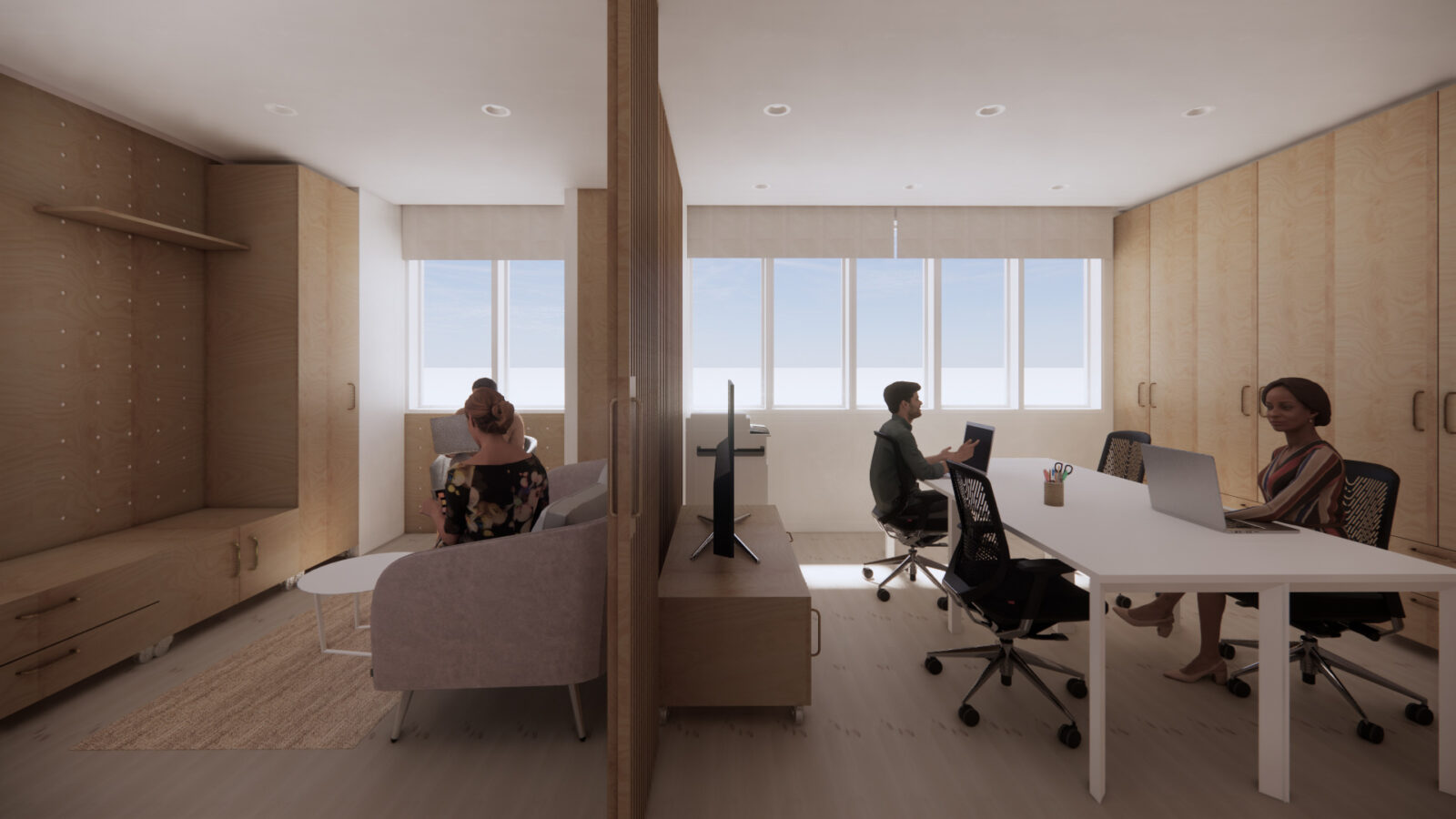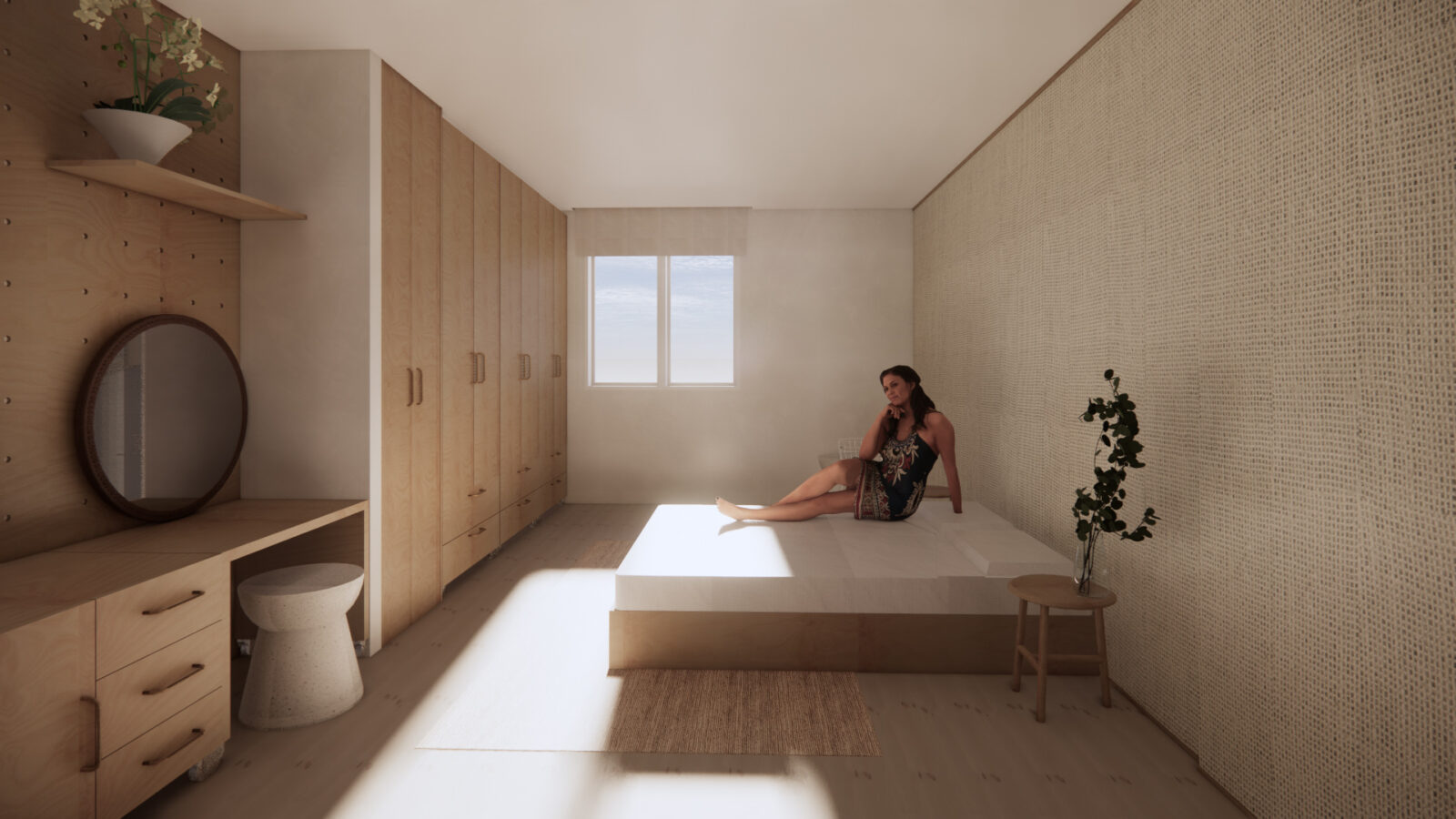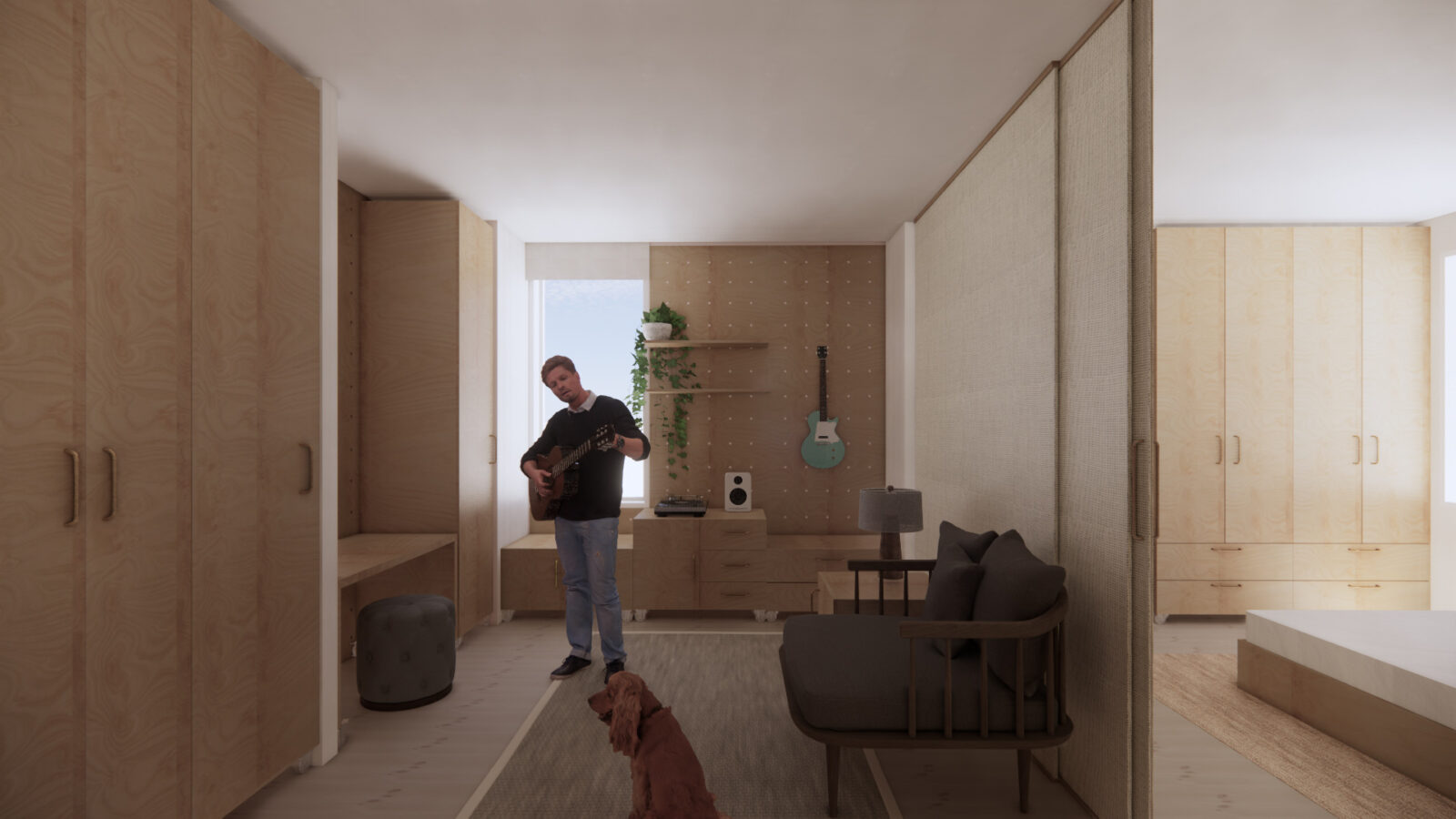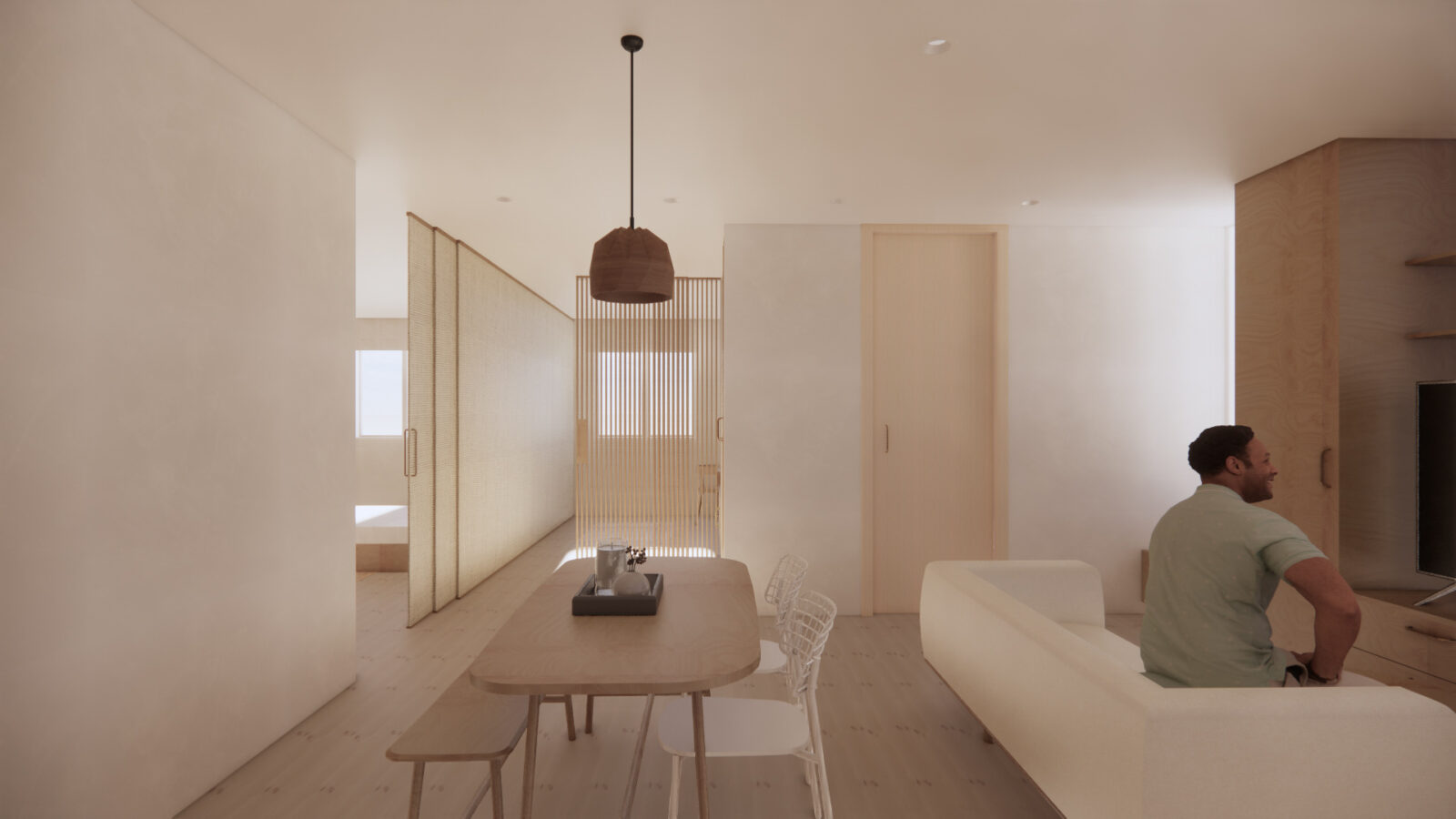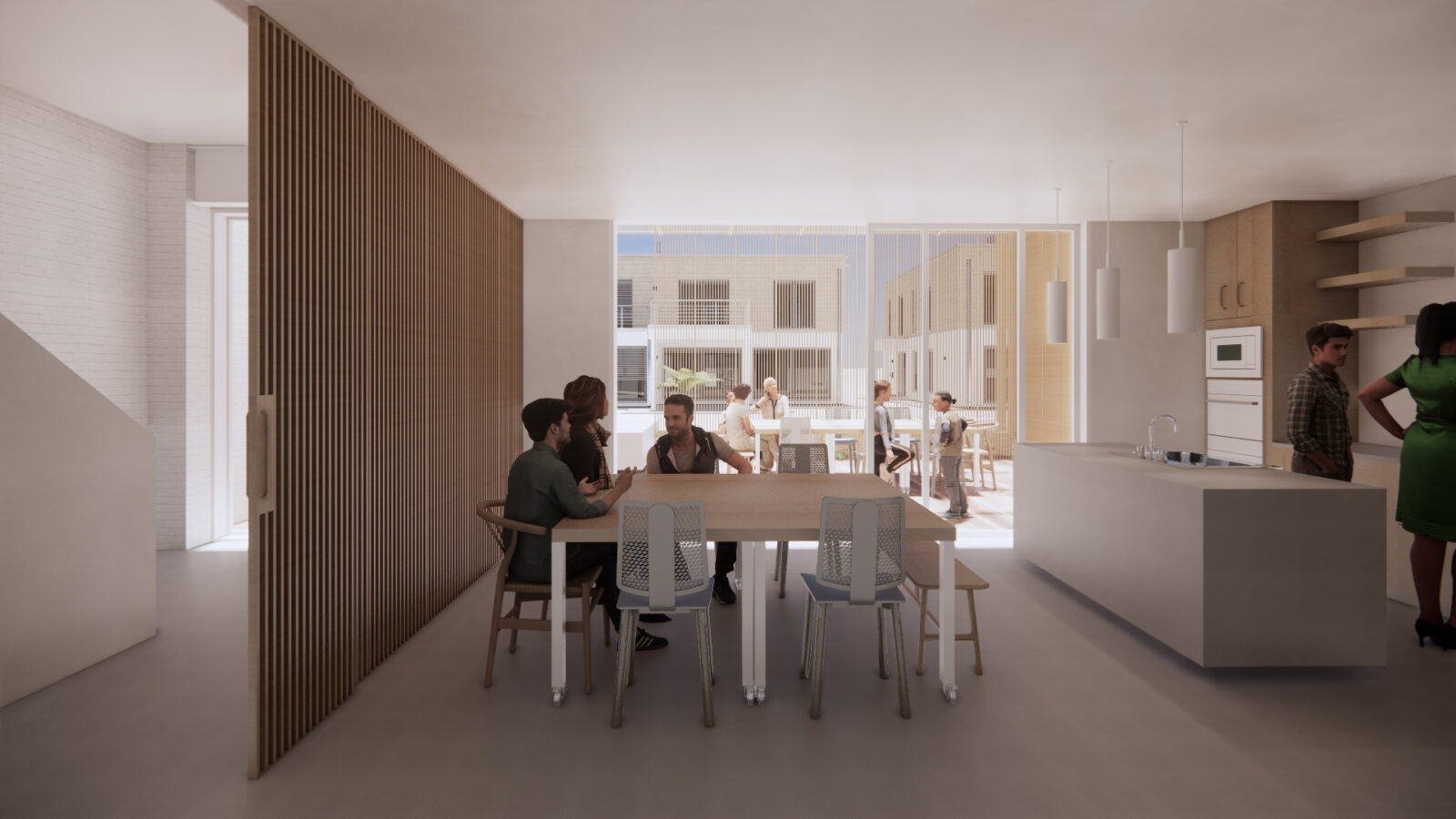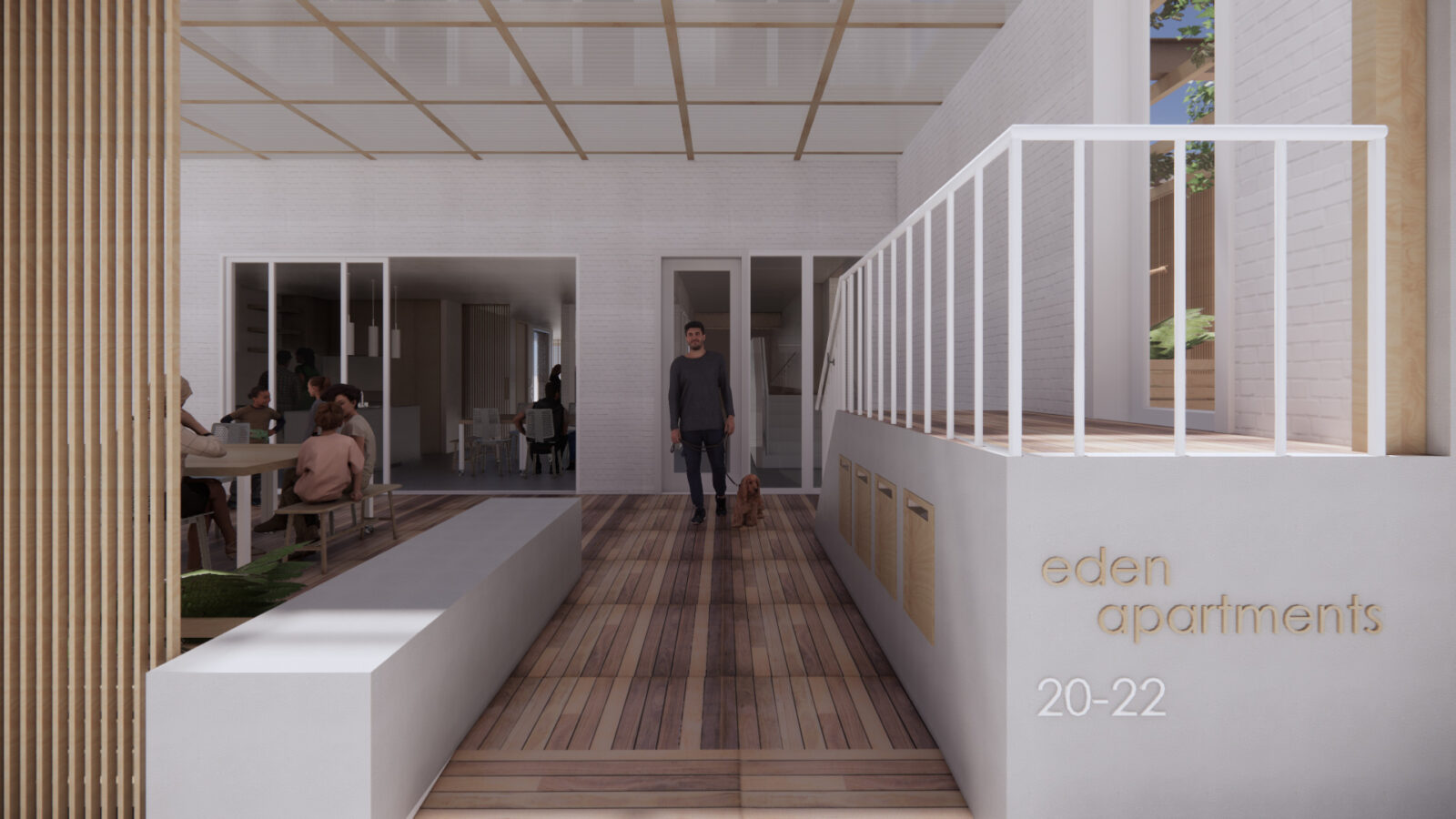Interior
Eden: An Adaptable Apartment
Awarded

The following project is to act as a multiplex co housing solution for all ages. The project aims to create a new social way of living that is inclusive regardless of age, and that has the ability to grow and adapt with the different phases of a users life. This results in a multi-residential development that encompasses the sustainability spheres, with an emphasis on the social aspect by integrating co-housing ideologies with liveable and adaptable design principles. This project strives to re-imagine the multi-residential mould and push the idea of connectedness, inclusivity and adaptability, resulting in increased user wellbeing.
